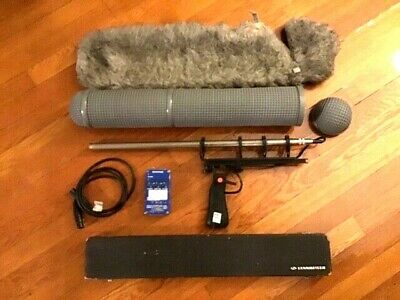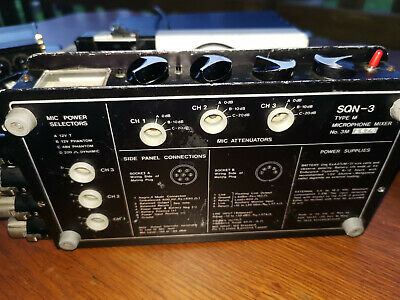looking on getting a new microphone for my dslr. I always see the RODE mics around but they are a bit costly. I also see absolutley a ton of other no name shotgun mics on amazon for like $30-50. are these even worth it? should I just pick one with the best reviews? or should I just bite the bullet and buy a high value one?
-
 ✅ Technical and creative solutions for your film.
✅ Technical and creative solutions for your film.
✅ Screenplay formatting help, plot and story guidance.
✅ A respectful community of professionals and newbies.
✅ Network with composers, editors, cast, crew, and more!
🎬 IndieTalk - Filmmaking and Screenwriting help site and community.
By filmmakers, for filmmakers since 2003
You are using an out of date browser. It may not display this or other websites correctly.
You should upgrade or use an alternative browser.
You should upgrade or use an alternative browser.
sound-gear best microphone?
- Thread starter robotkubo
- Start date
There are several threads here regarding microphones. Havelooking on getting a new microphone for my dslr. I always see the RODE mics around but they are a bit costly. I also see absolutley a ton of other no name shotgun mics on amazon for like $30-50. are these even worth it? should I just pick one with the best reviews? or should I just bite the bullet and buy a high value one?
you looked at any of them?
If you are really looking for the "best microphone" you need to
bite the bullet and buy a high value one. If you are looking for
a cheap microphone then go with one you can afford.
Details, details, details! We need more info if you want suggestions that are germane to your situation.
What are you shooting - narrative, run&gun, interviews……?
Which specific camera?
How much sound-for-picture experience do you have?
Firstly, just buying a "better" microphone and plopping it on top of your camera will not get you better sound. Solid production sound is the result of knowledge, skill and dedication to capturing quality production sound.
The optimum position for the mic is above and slightly in front of the actor(s) aimed at the notch at the base of the actors throat. So, unless your actors do not move at all, the aim of the mic must be constantly adjusted to insure optimum pick-up.
Now, on to mics. Rode mics are relatively inexpensive when you consider the fact that professional mics for production sound can run up to and even over $2,000. They are usually connected to additional thousands of dollars of mixers and recorders. So immediately nix the bargain basement mics; they are poorly made, are overly hyped in some frequencies and, as they are Hi-Z mics, are prone to RF and EM interference.
You should most definitely read "The Location Sound Bible" by Ric Viers; it's a good introduction into production sound.
Depending upon your camera one of the Rode mics will do a decent job as will the Audio-Technica ATR6550.
As always, I recommend that you retain someone to do the production sound for you, or renting what you need.
What are you shooting - narrative, run&gun, interviews……?
Which specific camera?
How much sound-for-picture experience do you have?
Firstly, just buying a "better" microphone and plopping it on top of your camera will not get you better sound. Solid production sound is the result of knowledge, skill and dedication to capturing quality production sound.
The optimum position for the mic is above and slightly in front of the actor(s) aimed at the notch at the base of the actors throat. So, unless your actors do not move at all, the aim of the mic must be constantly adjusted to insure optimum pick-up.
Now, on to mics. Rode mics are relatively inexpensive when you consider the fact that professional mics for production sound can run up to and even over $2,000. They are usually connected to additional thousands of dollars of mixers and recorders. So immediately nix the bargain basement mics; they are poorly made, are overly hyped in some frequencies and, as they are Hi-Z mics, are prone to RF and EM interference.
Your project will only look as good as it sounds, because
"Sound is half of the experience"
If your film looks terrible but has great sound, people might just think it's your aesthetic.
If your film looks great and has bad sound, people will think you're an amateur.
Sound is the first indicator to the industry that you know what you're doing.
"Sound is half of the experience"
If your film looks terrible but has great sound, people might just think it's your aesthetic.
If your film looks great and has bad sound, people will think you're an amateur.
Sound is the first indicator to the industry that you know what you're doing.
You should most definitely read "The Location Sound Bible" by Ric Viers; it's a good introduction into production sound.
Depending upon your camera one of the Rode mics will do a decent job as will the Audio-Technica ATR6550.
As always, I recommend that you retain someone to do the production sound for you, or renting what you need.
Dang, Alcove. You always have such thorough answers. Thanks for sharing your expertise.
I can ... get a buddy of mine who's working in sound design to give me a hand. I still have much to learn
See if you can convince him to be your PSM/Boom-op. He (hopefully) already has some technical and practical experience, so he "only" needs to learn a few new techniques/skills. Being a boom-op is HARD, but really good ones make a very nice living. During preproduction you should also do a script consultation with him to get a sonic perspective on your project if he is the one that will be doing the audio post.
See if you can convince him to be your PSM/Boom-op. He (hopefully) already has some technical and practical experience, so he "only" needs to learn a few new techniques/skills. Being a boom-op is HARD, but really good ones make a very nice living. During preproduction you should also do a script consultation with him to get a sonic perspective on your project if he is the one that will be doing the audio post.
Thanks, will do.

Should I get a single boom mic setup or should that also accompany mics on each actor? can I just get away with a simple shotgun mic? There is little to no dialogue since they're are only two people and mostly its one talking directly to the camera. any suggestions?
The job of the boom-op is to keep the boomed mic accurately aimed, so for most situations one boomed mic is enough.
Again, HOW your audio gear will be used is decided by the PSM (Production Sound Mixer) and/or the boom-op. For your described situation a single mic on a boom-pole would be sufficient. If you are shooting outdoors a shotgun mic is probably your best option; if you are indoors a hypercardioid may be preferable.
Here's a few videos about production sound.
https://www.youtube.com/watch?v=gzwm29UdKLA
https://www.youtube.com/watch?v=gxpvbwE8Hvw
https://www.youtube.com/watch?v=n6LqibtC-5g
https://www.youtube.com/watch?v=Ft8FgcUZbxU
After working on movie sound for a while now I agree with everything that has been said. It is so important and is a dead giveaway if a movie is bad.
-Matthew
-Matthew
Sub $100? SUB $50???????
Just hell no.
I wouldn't ever buy any shotgun which is sub $100. (a bit different though if it is a SDC, but they're not shotguns) When you're talking about "best" then you're talking thousands of dollars (and mixers will also own not one mic, but *MANY*.... for instance I own a Sanken CS3 and Sennheiser MKH60, plus *four* Rode NTG3 mics. Look up their costs! And that is but a small fraction of my mic collection)
Just stick with what you've got until you can buy a Deity S Mic 2 (although if you're literally begging on the streets then sure..... settle for a secondhand NTG1 instead? But don't buy it new!), as the Deity S Mic 2 is the "minimum" I'd recommend to start out with. (together with a Zoom F4 recorder, as having a mic on a camera itself will never be a great outcome! You need it out on a boom pole)
Just hell no.
I wouldn't ever buy any shotgun which is sub $100. (a bit different though if it is a SDC, but they're not shotguns) When you're talking about "best" then you're talking thousands of dollars (and mixers will also own not one mic, but *MANY*.... for instance I own a Sanken CS3 and Sennheiser MKH60, plus *four* Rode NTG3 mics. Look up their costs! And that is but a small fraction of my mic collection)
Just stick with what you've got until you can buy a Deity S Mic 2 (although if you're literally begging on the streets then sure..... settle for a secondhand NTG1 instead? But don't buy it new!), as the Deity S Mic 2 is the "minimum" I'd recommend to start out with. (together with a Zoom F4 recorder, as having a mic on a camera itself will never be a great outcome! You need it out on a boom pole)
Personally If I was trying to make a film on shoestring kit wise I'd look at the second hand market.
You can get great old mics that use T power rather than phantom power that are much cheaper than their modern equivalents.
Here's an example:

Plug it into an old sqn (that can supply T power). The preamps are excellent on old mixers like SQN, Audio developments and filmtech .
Here's an example:

plug the output into a recorder like a h4n

Add a few xlrs, a decent pair of headphones and a boom pole and you're ready to go.
You can get great old mics that use T power rather than phantom power that are much cheaper than their modern equivalents.
Here's an example:

Sennheiser MKH 815T Microphone + Updated Rycote Kit + Coherence PS3 Power Supply | eBay
Rycote Full Windscreen. Updated Rycote 4-point suspension. MKH 815 T Mic.
www.ebay.co.uk
Plug it into an old sqn (that can supply T power). The preamps are excellent on old mixers like SQN, Audio developments and filmtech .
Here's an example:

4 XLR Field Mixer SQN3 Type M adapted for DSLR/ budget camera/sound recorder | eBay
Old but Gold and still works fine. Good, clean, natural, analogic sound! With very good analogic limiters! and were the BBC choice for fileld mixers. I used it withmy Panasonic GH5S. Also, I made an input 12V female socket for use with ordinary cheap external battery (use with cautions only...
www.ebay.co.uk
plug the output into a recorder like a h4n

Zoom H4n Pro Handy Handheld Digital Audio Recorder With Cubase Le & Wavelab L... for sale online | eBay
Find many great new & used options and get the best deals for Zoom H4n Pro Handy Handheld Digital Audio Recorder With Cubase Le & Wavelab L... at the best online prices at eBay! Free delivery for many products!
www.ebay.co.uk
Add a few xlrs, a decent pair of headphones and a boom pole and you're ready to go.

